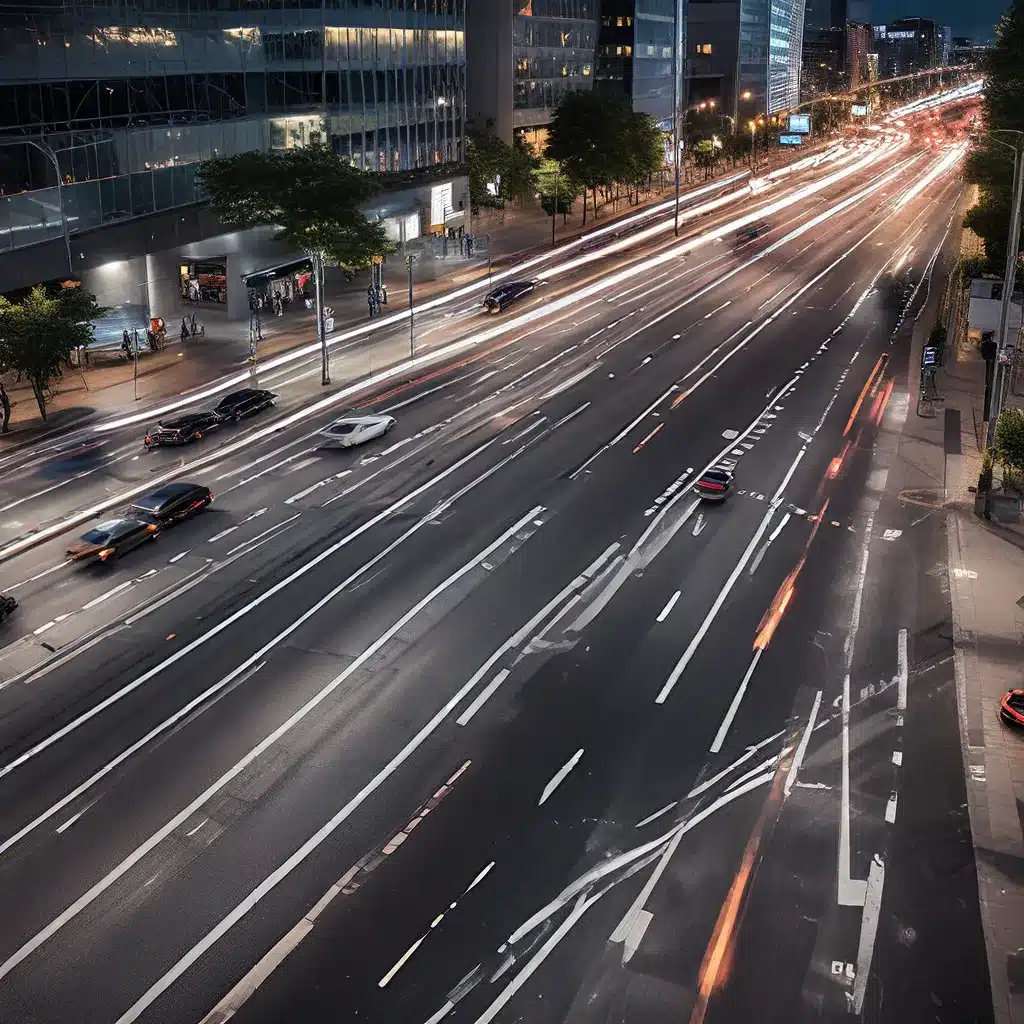
Revolutionizing Traffic Management with Sensor Network Technologies
As cities strive to become more intelligent and connected, the role of sensor networks and the Internet of Things (IoT) in transforming transportation systems has gained significant attention. These advanced technologies offer a promising solution to the age-old challenges of traffic congestion, pedestrian safety, and inefficient resource utilization that plague urban areas worldwide.
At the heart of this transformation lies the deployment of IoT sensors across city infrastructure. These sensors, strategically placed at intersections, along roads, and in parking lots, collect a wealth of real-time data on traffic patterns, vehicle movements, and environmental conditions. By leveraging this data through sophisticated software and analytics platforms, cities can gain unprecedented insights into the pulse of their transportation networks, enabling them to make data-driven decisions that optimize traffic flow, enhance safety, and improve the overall quality of life for residents.
Enhancing Traffic Management: The Power of IoT Sensors
One of the primary benefits of sensor network-driven smart transportation is the ability to dynamically manage traffic flows based on real-time conditions. Traditional traffic control methods, such as vehicle loop detectors and fixed-timing traffic lights, are often limited in their responsiveness and inability to adapt to changing circumstances. In contrast, IoT sensors can provide a more comprehensive and adaptive approach.
According to Statetech Magazine, IoT sensors can be used to monitor traffic density, identify bottlenecks, and dynamically adjust traffic signal timing to optimize the flow of vehicles. This not only reduces congestion but also minimizes idling time and associated carbon emissions, leading to improved air quality and environmental sustainability.
Furthermore, these sensor networks can be integrated with smart parking systems, enabling cities to identify available parking spaces in real-time and guide drivers to open spots, reducing the time and fuel spent searching for parking. This integration of traffic management and smart parking can have a significant impact on economic competitiveness, as cities known for their efficient transportation and accessibility become more attractive to businesses and residents.
Enhancing Pedestrian and Public Safety
Beyond optimizing traffic flows, sensor networks also play a vital role in enhancing pedestrian and public safety. By incorporating connected cameras and acoustic sensors into the network, cities can monitor near-miss incidents between vehicles and pedestrians, identify high-risk areas, and reconfigure intersections or adjust traffic signal timing to improve safety.
According to the National Center for Biotechnology Information (NCBI), this real-time data can enable rapid response and intervention by emergency services, potentially saving lives in the event of accidents or other public safety incidents. Additionally, the integration of license plate recognition capabilities can assist law enforcement in tracking and responding to criminal activity.
Overcoming Challenges in Sensor Network Deployment
While the benefits of sensor networks for smart transportation are clear, the deployment and management of these systems are not without their challenges. Cities must carefully consider the placement and configuration of sensors to ensure optimal coverage and data quality, taking into account factors such as urban growth, parking needs, and public safety requirements.
Furthermore, the software and analytics platforms used to manage the sensor data must be scalable, flexible, and interoperable with the diverse hardware components employed. As highlighted in a recent study, cloud-based solutions and 5G wireless networks can play a crucial role in providing the high-bandwidth, low-latency connectivity required for real-time data transmission and microsecond response times.
Securing the IoT Ecosystem
As sensor networks become increasingly integrated into the fabric of smart cities, the security and privacy of the collected data and the overall IoT ecosystem must be a top priority. Cybersecurity threats, such as data breaches, network vulnerabilities, and malicious IoT device infiltration, can have severe consequences for both public safety and municipal operations.
To address these concerns, cities must implement robust security measures, including end-to-end encryption, secure data management protocols, and comprehensive risk assessment and mitigation strategies. Collaboration between technology providers, policymakers, and cybersecurity experts will be essential in developing and maintaining a secure and resilient sensor network infrastructure.
Sustainable Energy Management for Sensor Networks
The energy consumption of sensor networks and IoT devices is another crucial consideration in the design and deployment of smart transportation systems. Energy-efficient sensor designs, intelligent power management, and the integration of renewable energy sources can optimize the environmental impact and operational costs associated with these networks.
Solar-powered sensors, for example, can reduce the reliance on grid-based electricity and minimize the carbon footprint of the transportation infrastructure. Innovative energy harvesting techniques, such as piezoelectric generators that harness kinetic energy from vehicle movements, can further enhance the sustainability of sensor networks.
The Future of Smart Transportation: Sensor Networks and IoT
As cities continue to evolve and embrace the digital transformation, the role of sensor networks and IoT technologies in revolutionizing transportation systems will only grow in importance. By leveraging the power of real-time data, cities can make more informed decisions, improve resource allocation, and enhance the overall quality of life for their residents.
The future of smart transportation is one where sensor-driven insights seamlessly integrate with advanced analytics, automation, and connectivity to create safer, more efficient, and more sustainable urban environments. As sensor network technologies continue to advance and evolve, the potential to transform the way we move, commute, and interact with our cities is truly exciting.